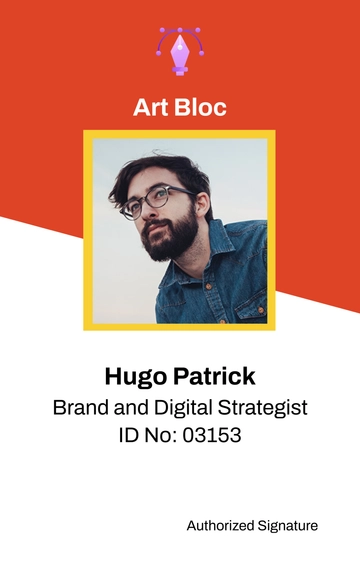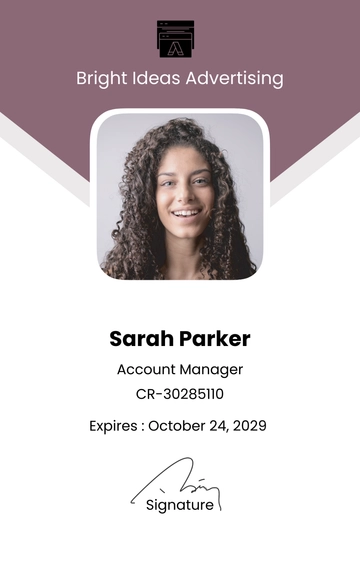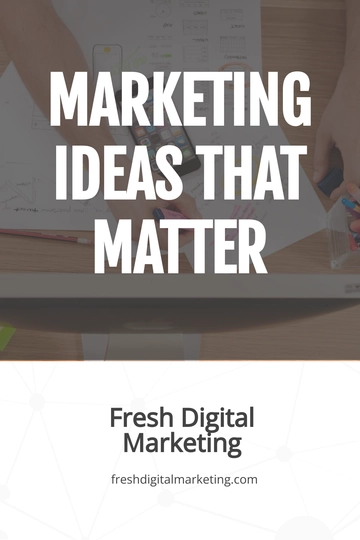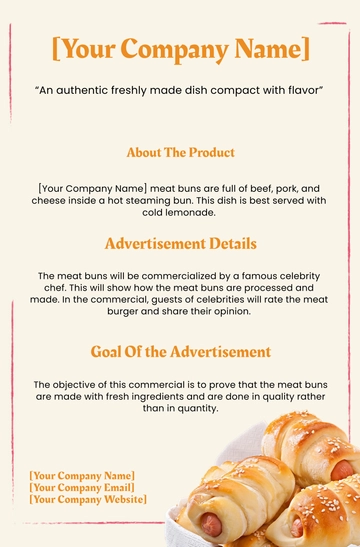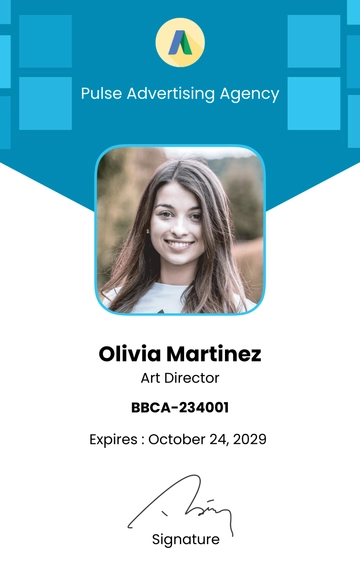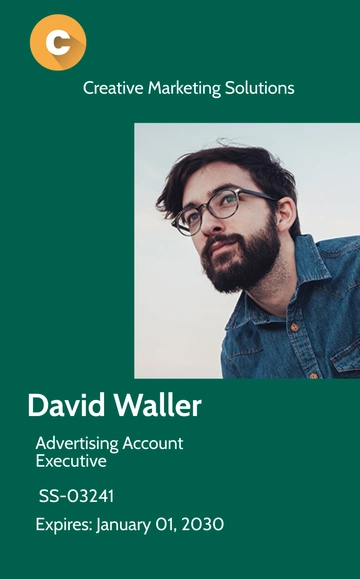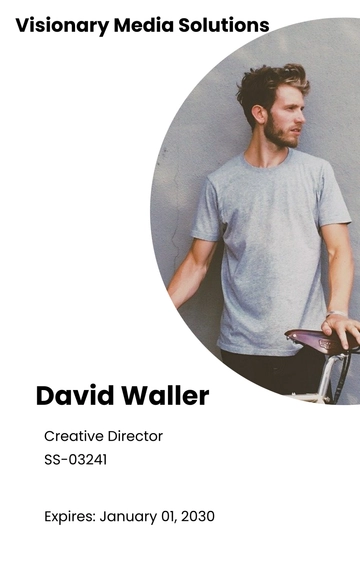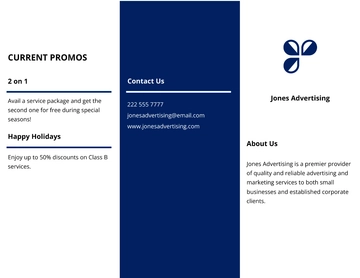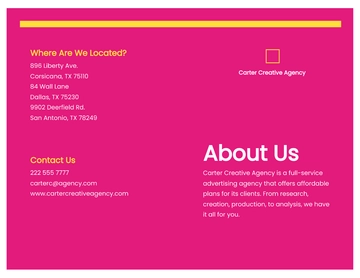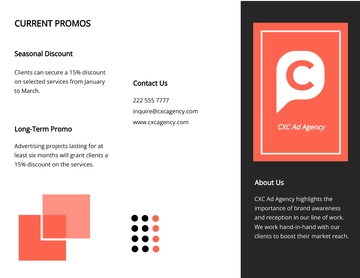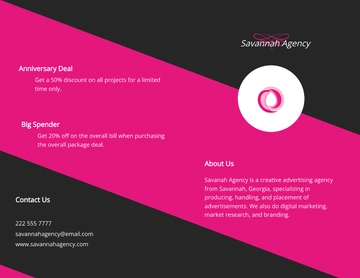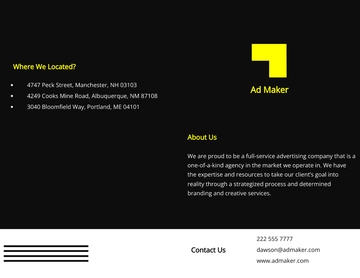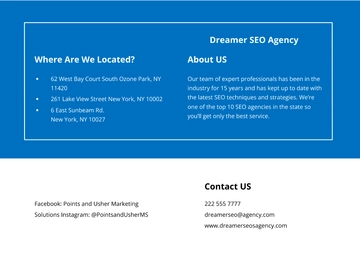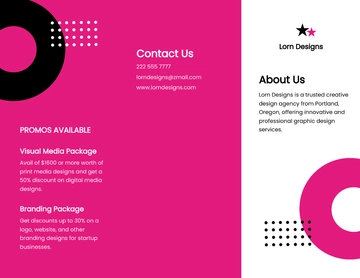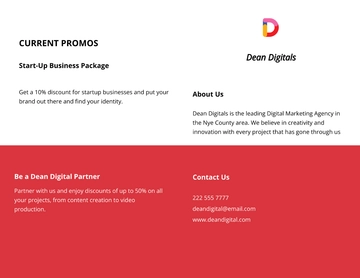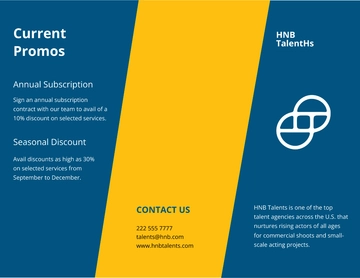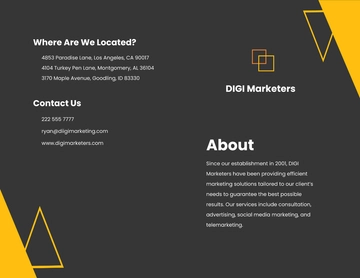Free Client Customized Advertising Solution
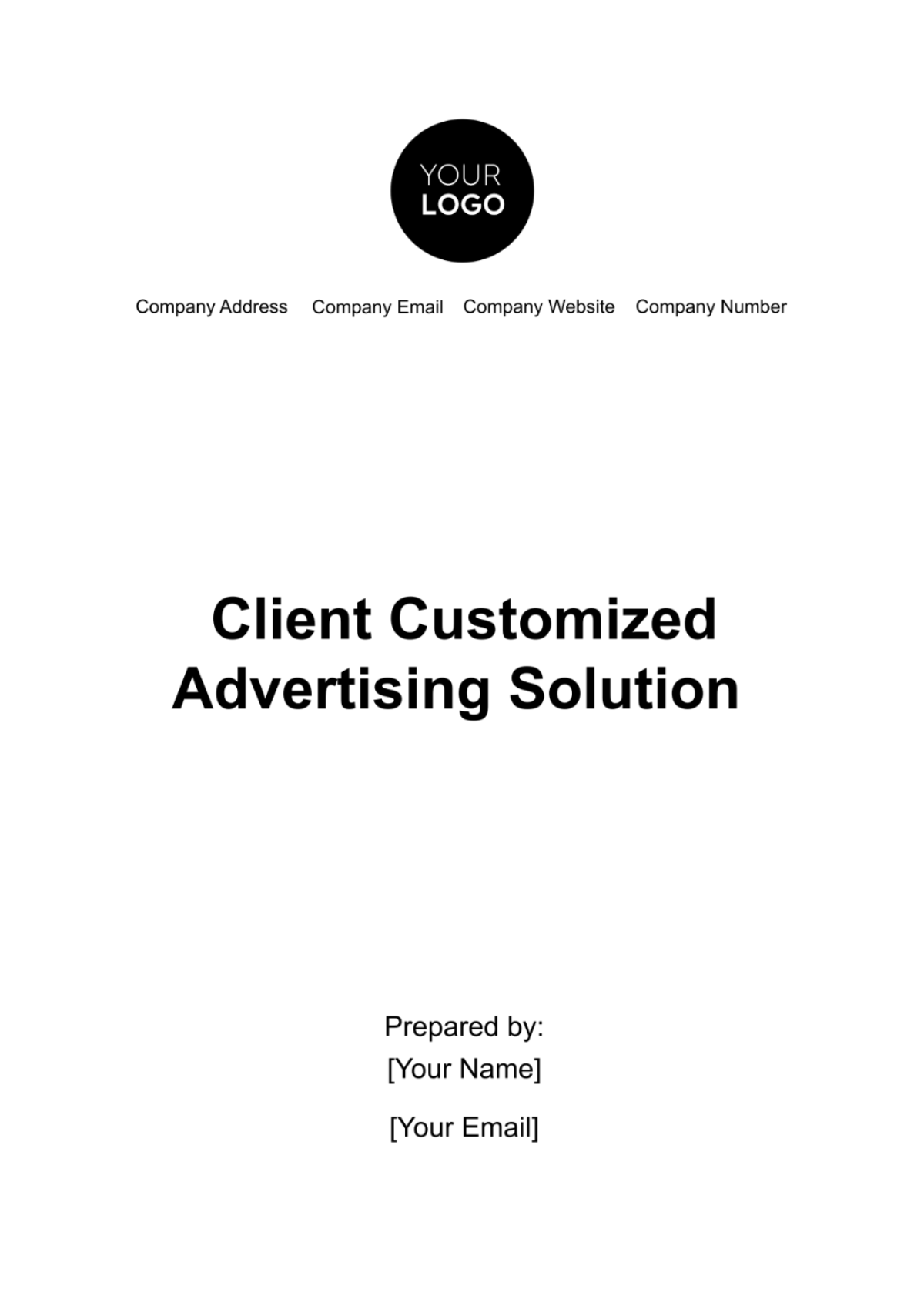
I. Introduction
We are excited to present a tailored advertising solution for [Client Name]. This comprehensive strategy is designed to achieve your specific objectives and elevate your brand presence in the [Industry] market.
II. Client Background
A. Industry Analysis
[Client Name] operates in the [Industry], a sector characterized by [brief description of the industry]. Key competitors include [Competitor 1], [Competitor 2], and [Competitor 3].
B. Target Audience Analysis
Our research indicates that the target audience for [Client Name] consists of [demographic details] with a particular focus on [specific characteristics].
III. Campaign Objectives
The campaign objectives are not mere benchmarks; they are strategic milestones that propel [Client Name] toward market prominence and sustained growth.
A. Elevated Brand Awareness
Our primary goal is to saturate the market with [Client Name]'s brand, ensuring it becomes synonymous with excellence and innovation. Through a mix of digital, social, and print channels, we aim to permeate the consciousness of the target audience.
B. Drive Specific Actions
Beyond awareness, we aspire to prompt tangible actions. Whether it's increasing website traffic, generating leads, or fostering social media interactions, each campaign element is tailored to guide the audience toward meaningful engagements with [Client Name]'s offerings.
C. Sales Amplification
The ultimate measure of success lies in revenue growth. We are committed to not just boosting sales but creating a sustainable upward trajectory, leveraging data-driven insights to optimize conversion funnels and maximize return on investment.
D. Enhanced Brand Perception
Beyond quantitative metrics, we aim to influence qualitative aspects. By shaping brand perceptions through strategic messaging and visual storytelling, we intend to position [Client Name] as a trusted, innovative, and customer-centric industry leader.
IV. Target Audience Analysis
A. Demographic Profile
Age Range:
The target audience for [Client Name] falls predominantly within the [age range], encompassing individuals at various life stages.
Gender Distribution:
There is a [0]% gender distribution, with a relatively balanced representation of both male and female demographics.
Income Levels:
The target audience exhibits diverse income levels, with a concentration in the [income range] bracket.
B. Psychographic Characteristics
Lifestyle:
Our audience is characterized by [specific lifestyle attributes], indicating [Client Name]'s products/services align seamlessly with their lifestyle choices.
Values and Beliefs:
The target audience values [specific values and beliefs], creating an opportunity for [Client Name] to resonate with these principles in its advertising messages.
C. Behavioral Traits
Purchase Behavior:
A significant portion of the target audience exhibits [specific purchase behaviors], indicating a potential inclination toward [Client Name]'s offerings.
Media Consumption Habits:
Our audience engages with [primary media channels], making these platforms key focal points for our advertising strategy.
D. Geographical Considerations
The target audience is primarily located in [specific regions or locations], allowing us to tailor geographically targeted campaigns for maximum impact.
E. Technological Proficiency
Our audience is highly proficient in digital technologies, with [percentage]% regularly using [specific digital platforms].
F. Interests and Hobbies
The target audience shares interests in [specific activities or hobbies], providing opportunities for creative and engaging content.
G. Challenges and Pain Points
Through surveys and feedback analysis, we have identified [main challenges] faced by the target audience, allowing us to address these pain points in our messaging.
V. Brand Positioning
A. Digital Marketing
Targeted Reach: Precision in reaching specific demographics through targeted advertising on platforms such as Google Ads and Bing Ads.
Interactivity: Utilizing interactive elements such as quizzes, polls, and gamified content to enhance engagement and foster a sense of involvement.
Data-Driven Optimization: Leveraging analytics tools to continuously monitor and optimize the campaign in real-time based on performance data.
B. Social Media
Visual Appeal: Capitalizing on the visual nature of platforms like Instagram and Pinterest to showcase [Client Name]'s products/services through visually appealing content.
Community Building: Fostering a sense of community by encouraging user-generated content, hosting discussions, and actively participating in trending conversations.
Targeted Advertising: Utilizing the robust ad targeting options on social media platforms to ensure our content is seen by the most relevant audience segments.
C. Print Media
Wide Audience Reach: Reaching a broad audience, including those who may not be as active on digital platforms.
Credibility and Trust: Establishing credibility and trust through the tactile and traditional nature of print, especially for [specific demographics] who value tangible sources of information.
Brand Visibility: Enhancing brand visibility through carefully designed and strategically placed print advertisements that align with [Client Name]'s brand image.
VI. Advertising Channels
After careful consideration, we propose utilizing the following advertising channels:
Channel | Rationale |
Digital Marketing | Digital marketing takes center stage, utilizing platforms like Google Ads and Bing Ads for precise targeting. Engaging content, coupled with interactive elements, will enhance user participation. Real-time data analytics will guide continuous optimization, ensuring our messages resonate in the ever-evolving digital landscape. |
Social Media | Harnessing the power of [Platform 1] and [Platform 2], our social media approach fosters community engagement. Visually striking content on Instagram and Pinterest showcases [Client Name]'s offerings, while targeted advertising ensures our message reaches the right audience at the right time. |
Print Media | Print media remains a steadfast component, offering broad reach and tangible brand presence. Placing strategic ads in [Magazine/Newspaper] aligns with the preferences of [specific demographics], ensuring a comprehensive approach that embraces both digital innovation and traditional reliability. |
VII. Media Plan
A. Budget Allocation
Channel | Rationale |
Digital Marketing | [0]% |
Social Media | [0]% |
Print Media | [0]% |
B. Proposed Schedule
Digital Marketing:
Commencing on [Month Day, Year] and concluding on [Month Day, Year], the digital marketing campaign will strategically coincide with peak online activity. Adjustments to ad placements and targeting will be made in response to real-time analytics, ensuring continuous optimization throughout the campaign.
Social Media:
The social media campaign will run from [Month Day, Year] to [Month Day, Year], aligning with specific events, holidays, or trends relevant to [Target Audience]. A content calendar, synchronized with the overall campaign theme, will guide posts, stories, and interactions for cohesive and timely engagement.
Print Media:
Our print media strategy is scheduled from [Month Day, Year] to [Month Day, Year], accounting for publication cycles of [Magazine/Newspaper]. Placements will be timed to coincide with readership peaks, ensuring a strategic blend of print and digital visibility for a broader and lasting impact.
VIII. Creative Strategy
Our Creative Strategy revolves around crafting a compelling narrative that resonates with [Client Name]'s target audience. The messaging tone will be [tone], striking a chord with the audience's emotions and values. Visual elements, meticulously designed for platforms such as Instagram and Pinterest, will showcase [Client Name]'s products/services in an aesthetically pleasing manner. The Call-to-Action (CTA) will be strategically placed, urging users to [desired action]. This cohesive blend of emotionally resonant messaging, visually captivating content, and a clear CTA aims to create a memorable and actionable brand experience, fostering engagement and conversion.
IX. Content Development
Crafting compelling content is the linchpin of our advertising strategy. For digital marketing, concise and impactful ad copies will be tailored for platforms like Google Ads and Bing Ads, ensuring a resonance with users actively seeking relevant solutions. On social media, our content approach embraces visual storytelling, leveraging engaging visuals and interactive elements to foster community participation. In print media, attention-grabbing headlines and visuals will be meticulously designed to captivate the audience of [Magazine/Newspaper]. This content synergy ensures a cohesive brand narrative that not only grabs attention but also fosters lasting connections with [Client Name]'s target audience.
X. Budget Allocation
To optimize resources, the total campaign budget of $[0] will be strategically distributed. [0]% will be allocated to Digital Marketing for targeted online reach, [0]% to Social Media for community engagement, and [0]% to Print Media for broad visibility.
XI. Performance Metrics and Analytics
Key Performance Indicators (KPIs) such as click-through rates, conversion rates, and social media engagement will be meticulously tracked using [Analytics Tool]. Real-time analytics will provide insights for agile campaign adjustments, ensuring continuous alignment with campaign objectives.
XII. Timeline
The campaign will unfold across key milestones. Commencing with [Key Milestone 1], subsequent phases will seamlessly progress to meet deadlines, culminating in the achievement of [Key Milestone 3]. This timeline ensures a methodical and efficient campaign execution.
XIII. Risk Analysis
Anticipated challenges, including potential shifts in market dynamics and unforeseen external factors, have been identified. Comprehensive contingency plans are in place to promptly address challenges, ensuring minimal disruption and maintaining the campaign's trajectory toward success.
XIV. Legal and Compliance Considerations
To uphold legal standards and regulations, all advertising materials will undergo rigorous review by our legal team. This process ensures compliance with [specific laws] and protects [Client Name]'s reputation. Approvals will be obtained promptly, allowing for seamless campaign execution.
XV. Collaboration and Communication Plan
A structured collaboration plan outlines team roles and responsibilities, fostering a transparent workflow. Regular updates will be disseminated through [Communication Channels], ensuring seamless coordination and enabling swift adaptation to emerging insights. This iterative approach promotes effective teamwork and campaign optimization.
XVI. Conclusion
This Client Customized Advertising Solution is a meticulously crafted roadmap designed to propel [Client Name] towards unparalleled success. By strategically blending digital prowess with traditional visibility, our integrated approach ensures a comprehensive brand presence. With a dedicated focus on the target audience's demographics, behaviors, and preferences, our creative strategy aims to resonate authentically. The allocated budget is optimized across channels, each chosen for its unique strengths. As we navigate this campaign, our commitment to real-time analytics, risk mitigation, legal compliance, and seamless collaboration positions us to not only meet but exceed the set objectives. Together, we embark on a journey to elevate [Client Name]'s brand to new heights.
- 100% Customizable, free editor
- Access 1 Million+ Templates, photo’s & graphics
- Download or share as a template
- Click and replace photos, graphics, text, backgrounds
- Resize, crop, AI write & more
- Access advanced editor
Transform your advertising strategy with the Client Customized Advertising Solution Template from Template.net. This editable and customizable template offers unparalleled flexibility, allowing you to tailor your campaigns effortlessly. With our intuitive AI Editor Tool, crafting compelling advertisements has never been easier. Elevate your marketing efforts with Template.net's innovative solutions.

